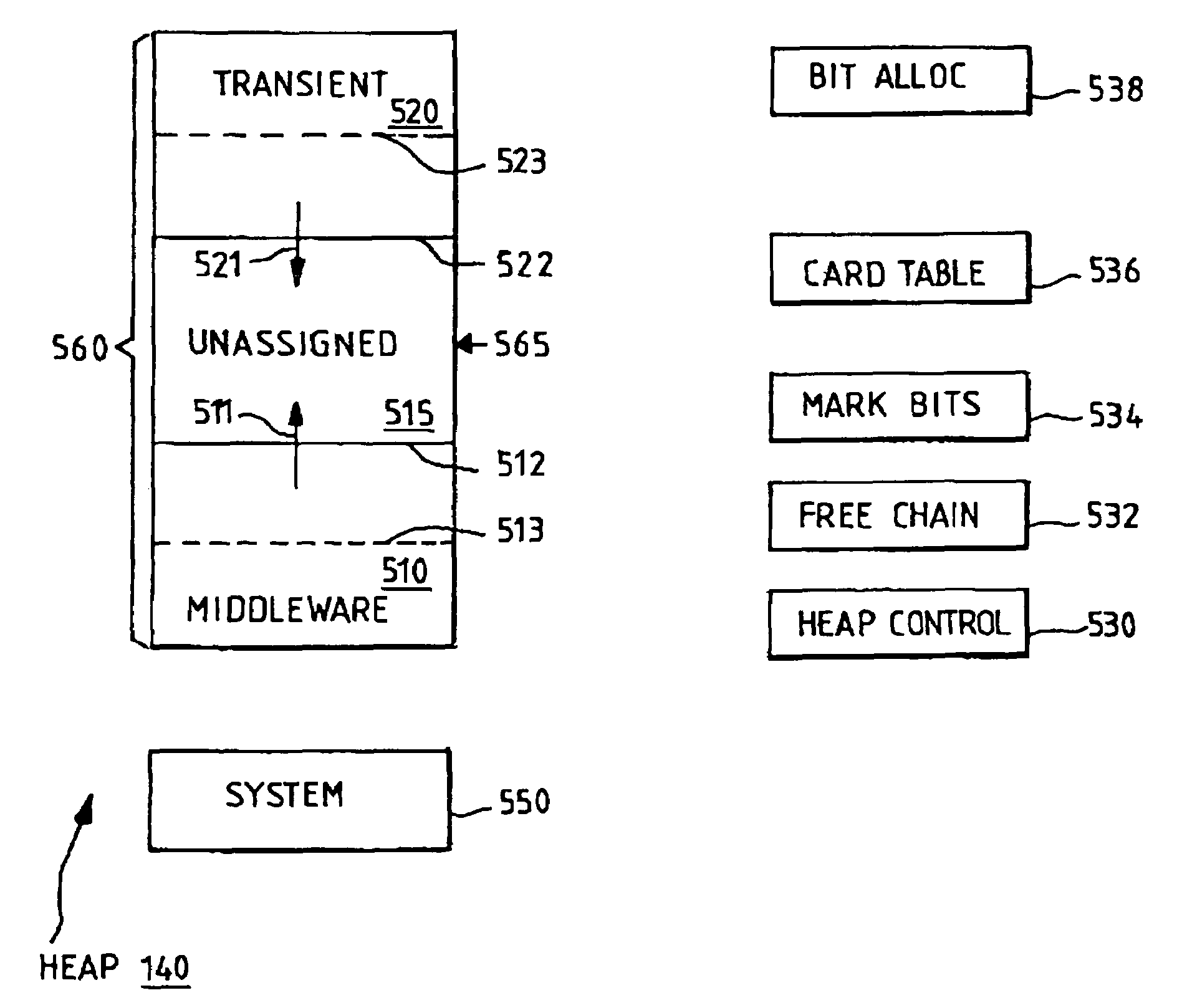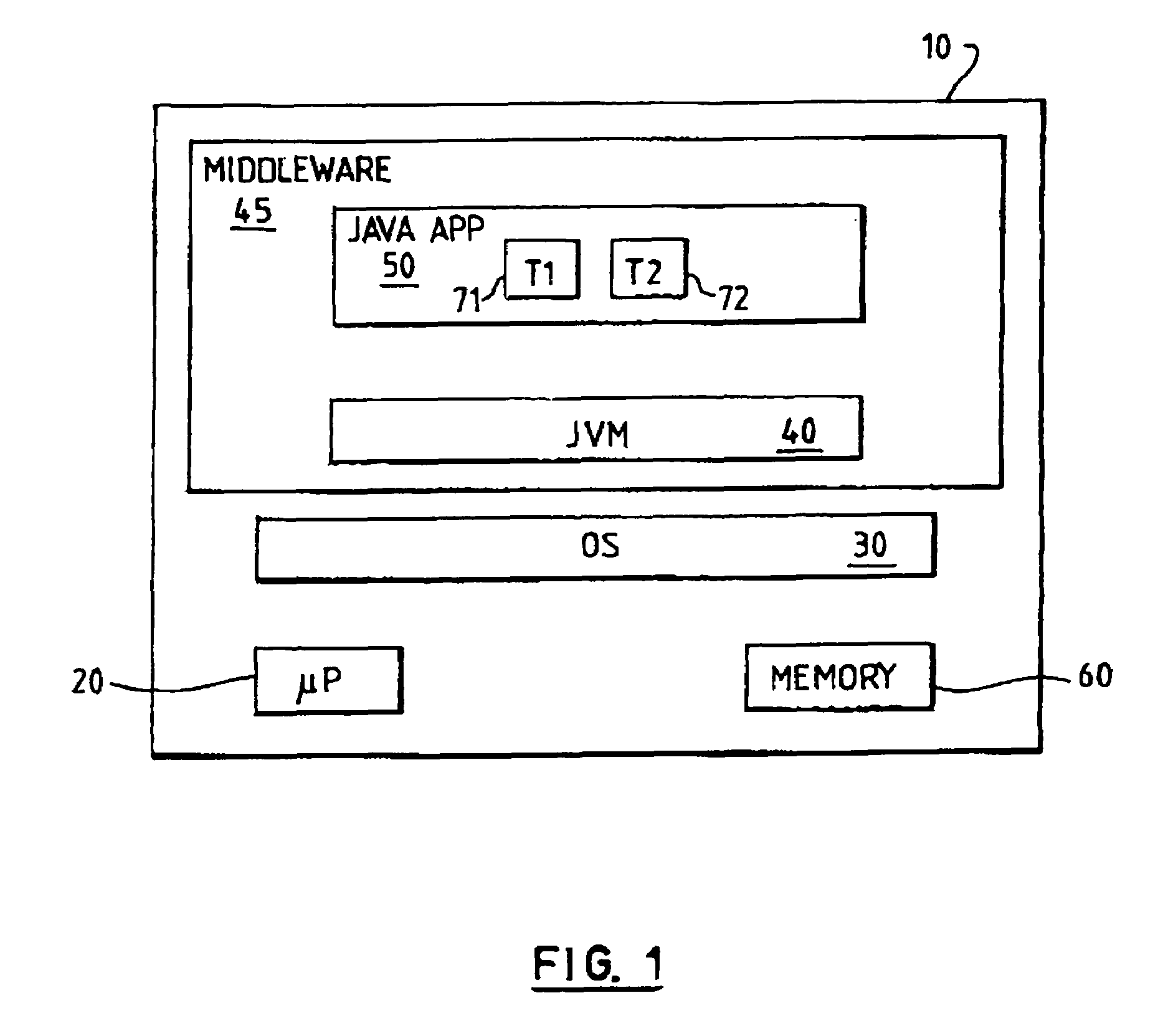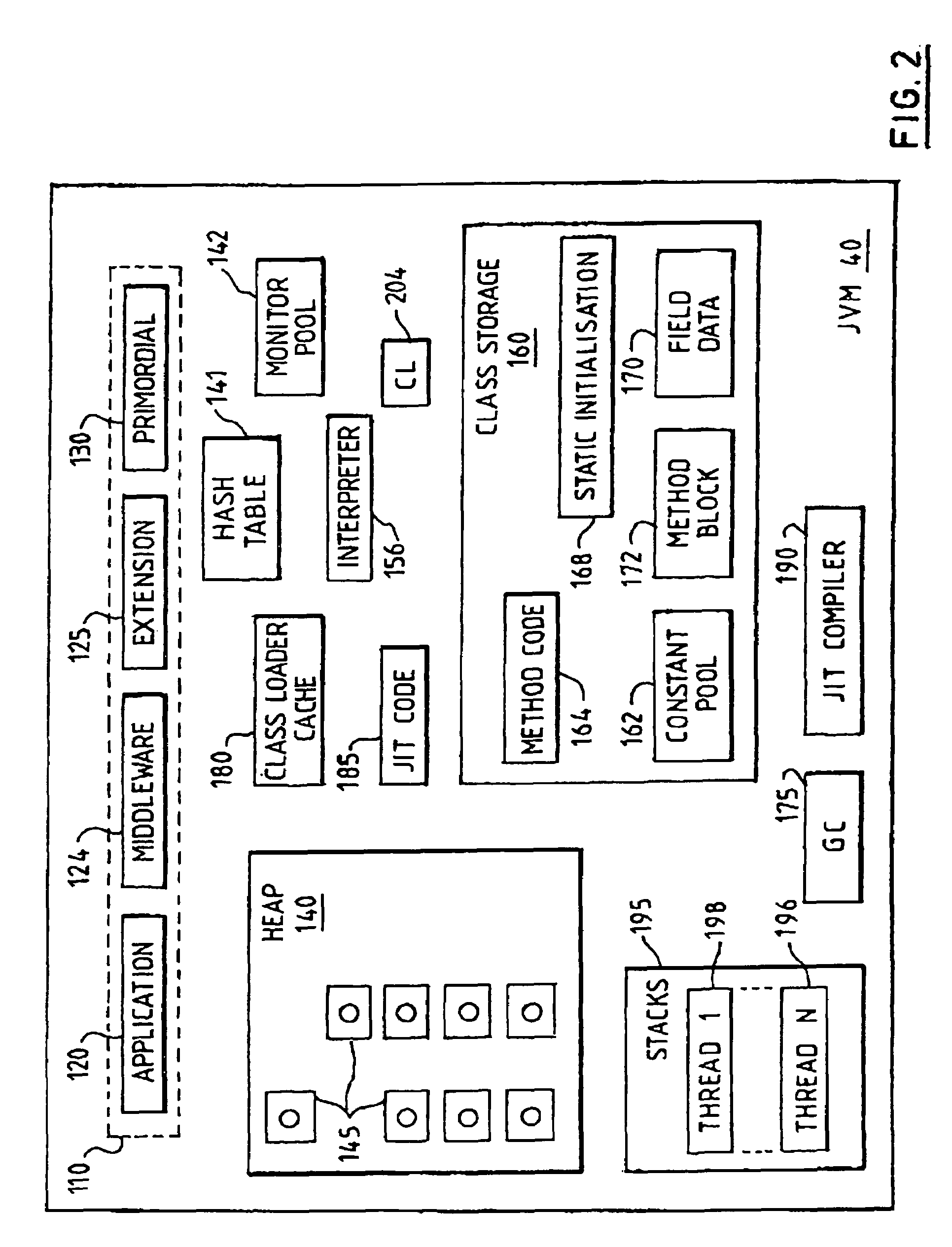Serially, reusable virtual machine
a virtual machine and reusable technology, applied in the field of reusable virtual machines, can solve the problems of degrading the scalability of java server solutions, offset readjustments that are extremely costly, and initial delay in running applications, so as to save the cost of process teardown and start up, save the cost of class linking, loading and initializing, and increase the volume and throughput of applications.
- Summary
- Abstract
- Description
- Claims
- Application Information
AI Technical Summary
Benefits of technology
Problems solved by technology
Method used
Image
Examples
Embodiment Construction
[0036]FIG. 1 illustrates a computer system 10 including a (micro)processor 20 which is used to run software loaded into memory 60. The software can be loaded into the memory by various means (not shown), for example from a removable storage device such as a floppy disk, CD ROM, or DVD, or over a network such as a local area network (LAN), telephone / modem connection, or wireless link, typically via a hard disk drive (also not shown). Computer system runs an operating system (OS) 30, on top of which is provided a Java virtual machine (JVM) 40. The JVM looks like an application to the (native) OS 30, but in fact functions itself as a virtual operating system, supporting Java application 50. A Java application may include multiple threads, illustrated by threads T1 and T271, 72.
[0037]System 10 also supports middleware subsystem 45, for example a transaction processing environment such as CICS, available from IBM Corporation (CICS is a trademark of IBM Corporation). The middleware subsys...
PUM
 Login to View More
Login to View More Abstract
Description
Claims
Application Information
 Login to View More
Login to View More - R&D
- Intellectual Property
- Life Sciences
- Materials
- Tech Scout
- Unparalleled Data Quality
- Higher Quality Content
- 60% Fewer Hallucinations
Browse by: Latest US Patents, China's latest patents, Technical Efficacy Thesaurus, Application Domain, Technology Topic, Popular Technical Reports.
© 2025 PatSnap. All rights reserved.Legal|Privacy policy|Modern Slavery Act Transparency Statement|Sitemap|About US| Contact US: help@patsnap.com



